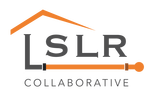Defining Disadvantaged Communities
|
Relevant policies and pieces of legislation, including EPA’s Lead and Copper Rule Revisions (LCRR), often use the term “disadvantaged communities” to refer to communities with environmental justice concerns and those with predominantly low-income people and/or communities of color. Federal, state, and local agencies and regulators have differing definitions of “community” and of “disadvantaged communities.” As such, it is helpful to work with regulators as well as state and local public health and community organizations to understand how they define disadvantaged communities and ensure adherence to any state or local requirements. The Association of State Drinking Water Administrators tracks states’ definitions of “disadvantaged communities” here. What are federal requirements for prioritizing disadvantaged communities? The current LCRR does not define “disadvantaged community” or “disadvantaged consumer.” However, prioritization of disadvantaged consumers and populations most sensitive to effects of lead is required for LSL replacement programs under the LCRR. Guidance available from the EPA on equity is limited to eligibility criteria for LSL replacement funding. EPA issued guidance to help states revise their definitions to ensure the LSL replacement funds available through the 2021 Infrastructure Investment and Jobs Act are provided to communities that need to be prioritized for LSL replacement. What are state and local government requirements for prioritizing disadvantaged communities? The LCRR uses the term “disadvantaged consumers” when it discusses LSL replacement prioritization, and EPA provided guidance to the states for Infrastructure Improvement and Jobs Act funding, but states determine their own definition of “disadvantaged communities.” Some states have requirements for incorporating equity in LSL replacement programs, while others are in the process of developing such requirements. State or primacy agencies should be contacted to confirm any specific requirements that should be included in LSL replacement programs. What are drinking water primacy agency requirements for prioritizing disadvantaged communities? Regulators may have separate requirements for assessing equity than state and local governments. Existing requirements or requirements that are in development should be confirmed with primacy agencies. What are the requirements from available LSL replacement funding sources? Different state and federal grant and loan programs have specific definitions of disadvantaged communities and include equity efforts in their application scoring. It is important that equity assessments align with these definitions to be eligible for funding. Examples of funding sources that may incorporate equity in their project prioritization beyond the Infrastructure Investment and Jobs Act funding (via the Drinking Water State Revolving Fund) already highlighted are:
|
The LSLR Collaborative recognizes that for some “disadvantaged” and “vulnerable” are not preferred ways to describe a community. We use the term “disadvantaged community” here for clarity’s sake because that is the term used by EPA in the LCRR and in other pertinent rules and regulations. |




